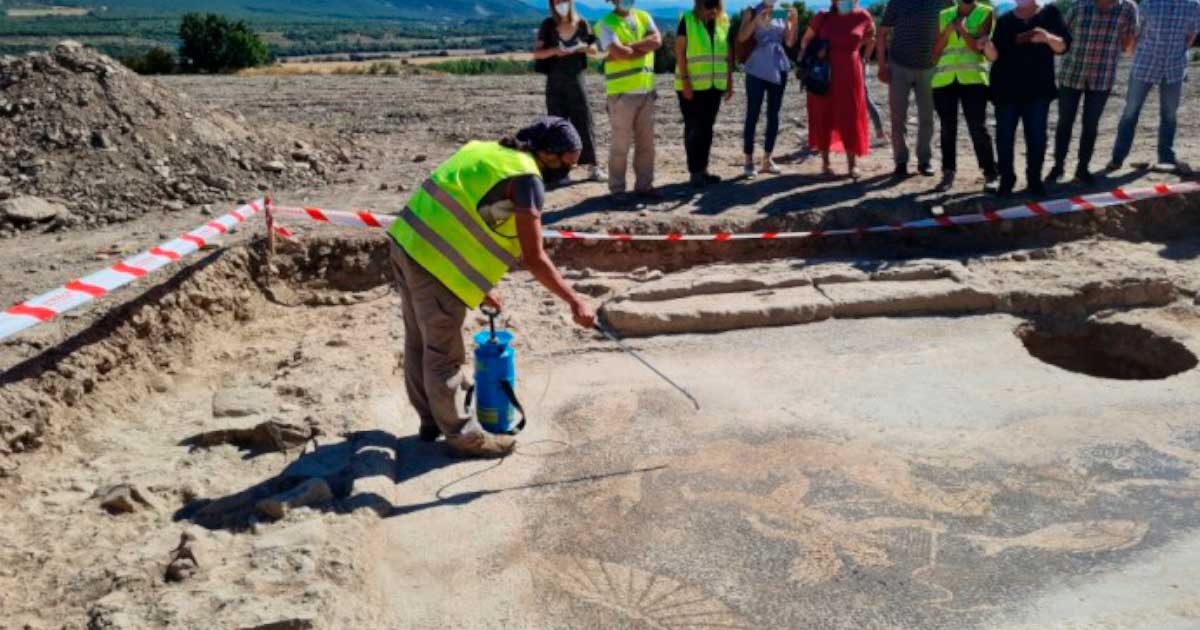A ‘Monumental’ Unknown Roman City Discovered In Spain
For over a decade, four teams of Spanish archaeologists have been digging at different excavation sites. Now they’ve realised it was all one thing - an enormous lost Roman city.
You might never have heard of Artieda, a tiny village located in the province of Zaragoza, Aragón, Spain. Well, now you have, and about a mile northwest of Artieda, a team of archaeologists from the University of Zaragoza have identified what they describe as “an entire Roman city that was previously unknown.”
One Big ‘Hitherto Unknown’ Roman City
This vast 10-acre dig site was previously broken up into several separately managed archaeological excavation zones. In July and August 2021, the archaeological site formerly known as the Hermitage of San Pedro was excavated. According to a report in Artnet, in early 2021 began two years of “intensive surface prospecting, clearing, and cleaning of opus caementicium elements of the western slope and the delimitation of four stratigraphic surveys.”
Only after this effort was it was realised the Hermitage of San Pedro, and all of the other sites are all part of one big hitherto unknown Roman city. Now, according to a report in Spanish daily, El Pais, the working title for the new “singular” site is El Forau de la Tuta.
- Roman Law and Its Lasting Influence On the Legal System of Europe
- Following the Boom and Bust of the Roman Economy

The 10-acre El Forau de la Tuta site, in the gray area, center of the image (SIGPAC).
Two Streets Surrounded By A Lost Roman City
This immense archaeological discovery required the marrying of classic detection methods with modern tech, including old mapping research being compared with modern scans. The first step towards the discovery of the Roman city, according to The Times, was the identification of two streets, the whispers of sidewalks, four rudimentary cement sewer outlets.” Furthermore, a marble hand from a public monument was discovered near the reception room of a thermal bath decorated with mosaics.
The public baths featured carefully carved shells and scallops, and two cupids are seen riding on the backs of seahorses. Incidentally, the chariot of Poseidon, the Greek god of the sea (Roman Neptune), was drawn by fierce seahorses with heads of a horse and tails of a fish. The team of archaeologists discovered “buildings of monumental proportions,” as well as two Corinthian capitals and three Italic Attic bases.
- New Date for Chedworth Roman Villa Mosaic Changes English History
- 6 Ways Roman Engineers Were Way Ahead of Their Time

A Corinthian capital and fluted drum with a shaft located in Artieda’s San Pedro hermitage. (El Pais)
Cementing The Singular Roman City
All of these discoveries support the emerging “singular Roman city” theory. And having identified so many signs of classic Roman urban planning the new assumption is that an ancient imperial Roman city existed here from the 1st through the 5th century.
So where to from here? The next round of research at the site will look closely at tombstones uncovered within the city necropolis and great interest is being directed towards charting the complexities of the city’s ancient water supply. The site archaeologists say the city's hydraulic system is suspected to be similar to those found in the ancient Roman cities in Andelo and Los Bañales.
Dating of artifacts has determined that this Roman city was abandoned after the collapse of the empire. However, later Spaniards would again value the site for its agricultural prowess and water supplies. Evidence was found of a 9th to 13th century medieval peasant’s village on top of the Roman ruins called either: Artede, Arteda, Artieda, or Arteda Ciuitate. Now, the researchers have a medieval top crust to work on as they probe into the much deeper archaeological layer of El Forau de la Tuta, the lost and found Roman city.
All things considered, it is of little wonder why the team of researchers are describing their realization that all of the different dig sites were one Roman city, as “stunning”.
Top image: Mosaic being revealed at the recently discovered Roman city site of El Forau de la Tuta, in Zaragoza, Spain. Source: Gobierno de Aragón
By Ashley Cowie
References
Asencio Esteban, J. A et al. 2021. El Forau de la Tuta (Arteida, Jacetania, Zaragoza) A Roman Imperial City Hitherto Unknown, on the Southern Slope of the Pyrenees. Available at: https://www.academia.edu/81544086/EL_FORAU_DE_LA_TUTA_ARTIEDA_JACETANIA_ZARAGOZA_UNA_CIUDAD_IMPERIAL_ROMANA_HASTA_AHORA_DESCONOCIDA_DE_LA_VERTIENTE_SUR_DE_LOS_PIRINEOS?f_ri=393




















Comments
Let’s understand that ancient cities, whether in a relatively hot, dry climate zone or not, would have been built around or over water sources. They would not have been abandoned and left barren. People will stay where there is good water. Thus, the abandonment of an ancient city, or the existence of barren ruins, is more likely explained by death of the people and demise of their culture, which would likely have been the case in the aftermath of the event that brought on the sudden emergence of the Ice Age around 120k years ago. Maybe one day, the dating is revisited and confirmed to correlate with this theory.
Nobody gets paid to tell the truth.